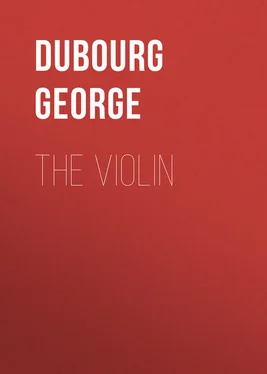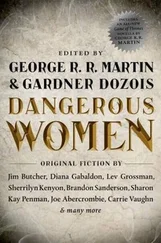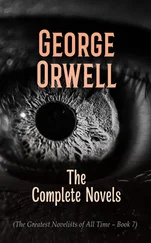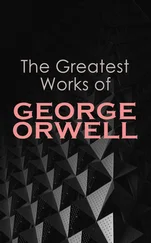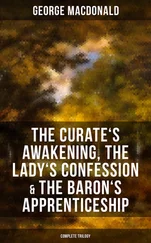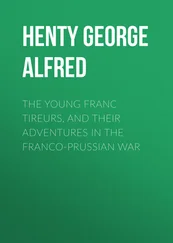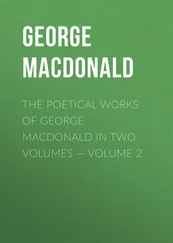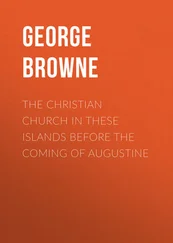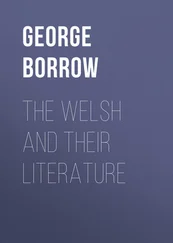George Dubourg - The Violin
Здесь есть возможность читать онлайн «George Dubourg - The Violin» — ознакомительный отрывок электронной книги совершенно бесплатно, а после прочтения отрывка купить полную версию. В некоторых случаях можно слушать аудио, скачать через торрент в формате fb2 и присутствует краткое содержание. Жанр: foreign_antique, foreign_prose, на английском языке. Описание произведения, (предисловие) а так же отзывы посетителей доступны на портале библиотеки ЛибКат.
- Название:The Violin
- Автор:
- Жанр:
- Год:неизвестен
- ISBN:нет данных
- Рейтинг книги:5 / 5. Голосов: 1
-
Избранное:Добавить в избранное
- Отзывы:
-
Ваша оценка:
- 100
- 1
- 2
- 3
- 4
- 5
The Violin: краткое содержание, описание и аннотация
Предлагаем к чтению аннотацию, описание, краткое содержание или предисловие (зависит от того, что написал сам автор книги «The Violin»). Если вы не нашли необходимую информацию о книге — напишите в комментариях, мы постараемся отыскать её.
The Violin — читать онлайн ознакомительный отрывок
Ниже представлен текст книги, разбитый по страницам. Система сохранения места последней прочитанной страницы, позволяет с удобством читать онлайн бесплатно книгу «The Violin», без необходимости каждый раз заново искать на чём Вы остановились. Поставьте закладку, и сможете в любой момент перейти на страницу, на которой закончили чтение.
Интервал:
Закладка:
If we were disposed, in England proper, to get up a claim for the first local habitation afforded to the violin, we might put together a much better case for the instrument that was familiar to the Anglo-Saxon gleemen, as early as the 10th century, than can be shown in behalf of the candidate just dismissed. We could produce an individual that should display a far better face, and should appear with, at least, no great disgrace to the Fiddle Family, though bearing about him none of the refinements of fashion. It may be as well to exhibit him at once: —
In this representation (borrowed from “Strutt’s Sports and Pastimes of the People of England”) we discern something which it is possible to call a fiddle, without much violence to our notions “de rerum natura.” There is grotesqueness, but not deformity: there is much of the general character of the true violin, though some of its most particular beauties are wanting. It is true that the sound-holes look as if no notes save circulars were to be permitted to issue through them – that the tail-piece seems forced to do duty for a bridge – that the sides have no indented middle, or waist, to give the aspect of elegance, and accommodate the play of the bow over the two extreme strings – that the finger-board is non-existent – and that the scroll, that crowning charm of the fiddle’s form, is but poorly made amends for by the excrescent oddity substituted at the end of the neck. With all this, however, there is visible warrant for calling it a sort of fiddle. Though even a forty-antiquary power might fail to prove it the origin of the stock, it has claims to be regarded as exhibiting no very remote analogy to the violin; and thus far, therefore, it may defy the competition of the Crwth . Whether it was really born in Saxon England, however, or introduced from Germany, might be a point for nice speculation, were it worth while to agitate the enquiry.
In this representation (borrowed from “Strutt’s Sports and Pastimes of the People of England”) we discern something which it is possible to call a fiddle, without much violence to our notions “de rerum natura.” There is grotesqueness, but not deformity: there is much of the general character of the true violin, though some of its most particular beauties are wanting. It is true that the sound-holes look as if no notes save circulars were to be permitted to issue through them – that the tail-piece seems forced to do duty for a bridge – that the sides have no indented middle, or waist, to give the aspect of elegance, and accommodate the play of the bow over the two extreme strings – that the finger-board is non-existent – and that the scroll, that crowning charm of the fiddle’s form, is but poorly made amends for by the excrescent oddity substituted at the end of the neck. With all this, however, there is visible warrant for calling it a sort of fiddle. Though even a forty-antiquary power might fail to prove it the origin of the stock, it has claims to be regarded as exhibiting no very remote analogy to the violin; and thus far, therefore, it may defy the competition of the Crwth . Whether it was really born in Saxon England, however, or introduced from Germany, might be a point for nice speculation, were it worth while to agitate the enquiry.
Whither, then, are we to turn, after all, for the solution of this problem in musical genealogy? That the violin is of a respectable age, though not so old as what is commonly called antiquity, is a fact apparent to the least laborious of enquirers; and it seems to have been the practice, with those who have had occasion to touch on this point, either to announce the said fact simply, and leave the reader to make the most of it, or to mix up with it, by way of elucidation, some general remark about the absence of light on the matter. “The origin of the violin,” observes one of these authorities, “like that of most of the several musical instruments, is involved in obscurity. As a species of that genus which comprehends the viola, violoncello, and violone, or double-bass, it must be very ancient .” Similarly indefinite are the conclusions of others who have approached the subject; so that it becomes necessary to dispense with such embarrassing aid, and to help oneself to the truth, if it is, peradventure, to be gathered. To me, much meditating on this matter (if I may borrow Lord Brougham’s classic form of speech), there seems reason to fix on Italy as the quarter to which we must look for the “unde derivatur” required. Say, thou soft “Ausonia tellus,” mother of inventions and nurse of the arts, say, soft and sunny Italy, is it not to thee that belongs the too modest merit of having produced and cherished the infancy, even as thou hast confessedly supported and developed the after-growth and advancement, of the interesting musical being whose history, in its more secret passages, we are here exploring? Is it a world (as Sir Toby feelingly asks), is it a world to hide virtues in? Well, if we cannot obtain direct satisfaction, let us pursue the investigation of our point a little more circuitously.
The perfect instrument which we now delight to honor by the name of the violin – the instrument complete in form and qualities – “totum in se teres atque rotundum” – appears to have been the result of a highly interesting series of improvements in the art of producing musical sounds from strings. How long a duration of time was occupied by the elaboration of these improvements respectively, is not readily to be ascertained, nor, perhaps, would the enquiry repay the trouble – but the general order of progression in the improvements themselves, is as clear as it is agreeable to contemplate. The first great advancement consisted in the sounding-board , by means of which invention a tone was produced, through the vibration of the wood, that was incomparably better and fuller than what was previously procured, through the mere vibration of the strings. As the human voice is evolved from the mouth under a concave roof, which serves it as a sounding-board, and gives additional grace and vigour to its inflections, so does the upper shell of the violin add a power of its own to the language of the strings. The next improvement in the instrument, thus extended in capability, was the neck or finger-board , which increased the range and variety of the sounds, by giving to each string the power of producing a series of notes. The bow was the next great step of advancement; and this, like other important inventions, has provoked much learned dispute as to the time and place of its origin, which however we shall not here more particularly revert to, for indeed, “non nostrum tantas componere lites.” With all these additions and appliances, we come not yet to the instrument par excellence , the true violin; for an intermediate and inferior state remains to be gone through. The consideration of that state brings us to the regular construction of the several instruments known by the general name of viol (for we pass by the rebec , as being only a spurious or illegitimate kind of fiddle), that were in the most common use during the 16th, and till about the middle of the 17th, century. These were similar to each other in form, but in size were distinguished into the treble-viol, tenor-viol, and bass-viol. They had six strings, and a finger-board marked with frets, like that of the lute or guitar 2 Footnote_2 In England, during the time here referred to, the instruments of the viol class were so much in favour that every considerable family had, as a necessary part of its establishment, a complete chest of viols , that is to say, a treble, tenor and bass-viol, each played with a bow, and bearing such proportion to one another as do the modern violin, tenor and violoncello.
. Finally, as the crowning change, the glorious consummation, came the conversion of the viol into the violin , effected by a diminution of size, a reduction of strings, from six to four, and the abolition of those impediments to smoothness, and helps to irritation, the frets . The same reformation attended the other instruments of the viol tribe, which now became, mutato nomine , the viola and the violoncello.
Интервал:
Закладка:
Похожие книги на «The Violin»
Представляем Вашему вниманию похожие книги на «The Violin» списком для выбора. Мы отобрали схожую по названию и смыслу литературу в надежде предоставить читателям больше вариантов отыскать новые, интересные, ещё непрочитанные произведения.
Обсуждение, отзывы о книге «The Violin» и просто собственные мнения читателей. Оставьте ваши комментарии, напишите, что Вы думаете о произведении, его смысле или главных героях. Укажите что конкретно понравилось, а что нет, и почему Вы так считаете.
